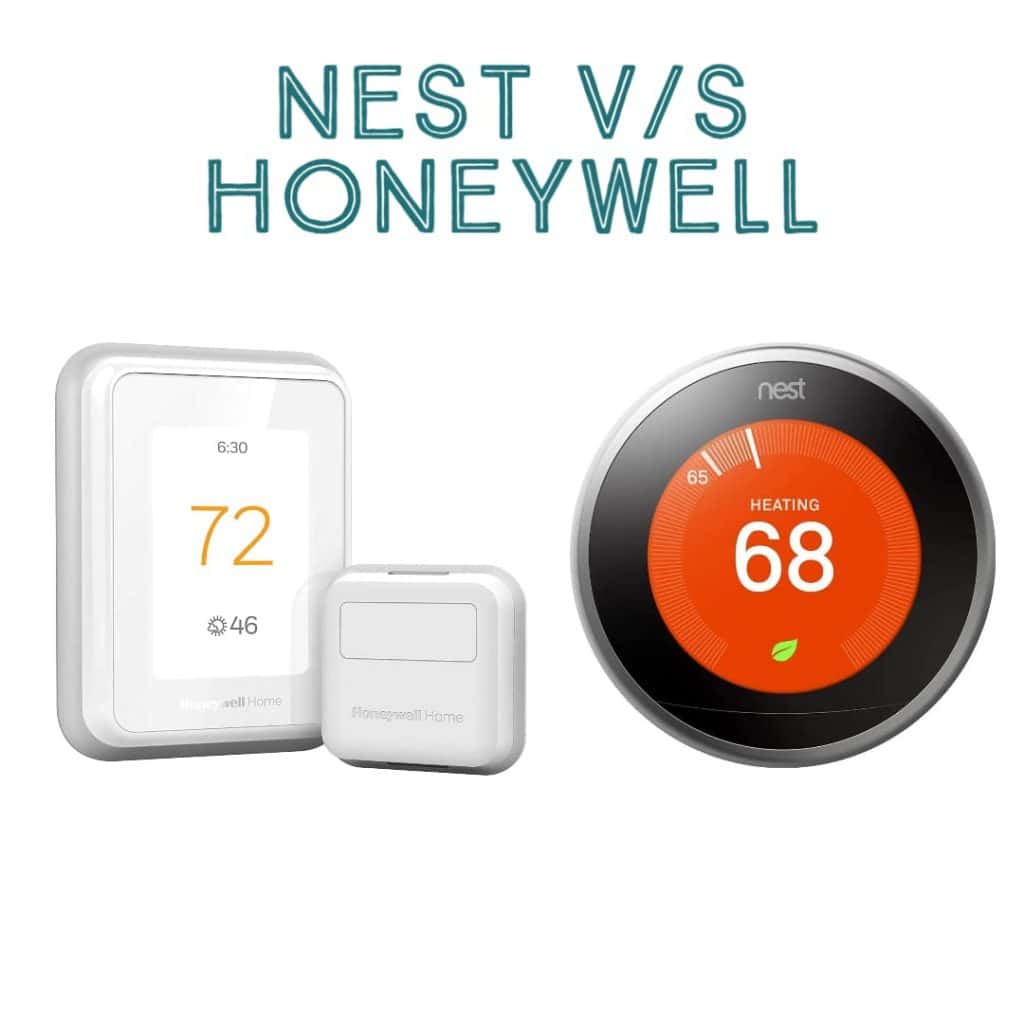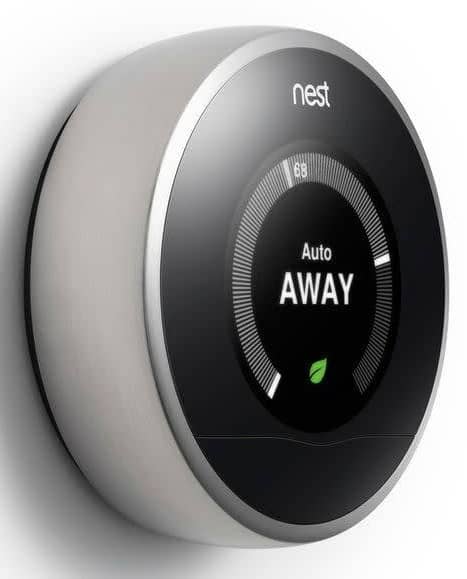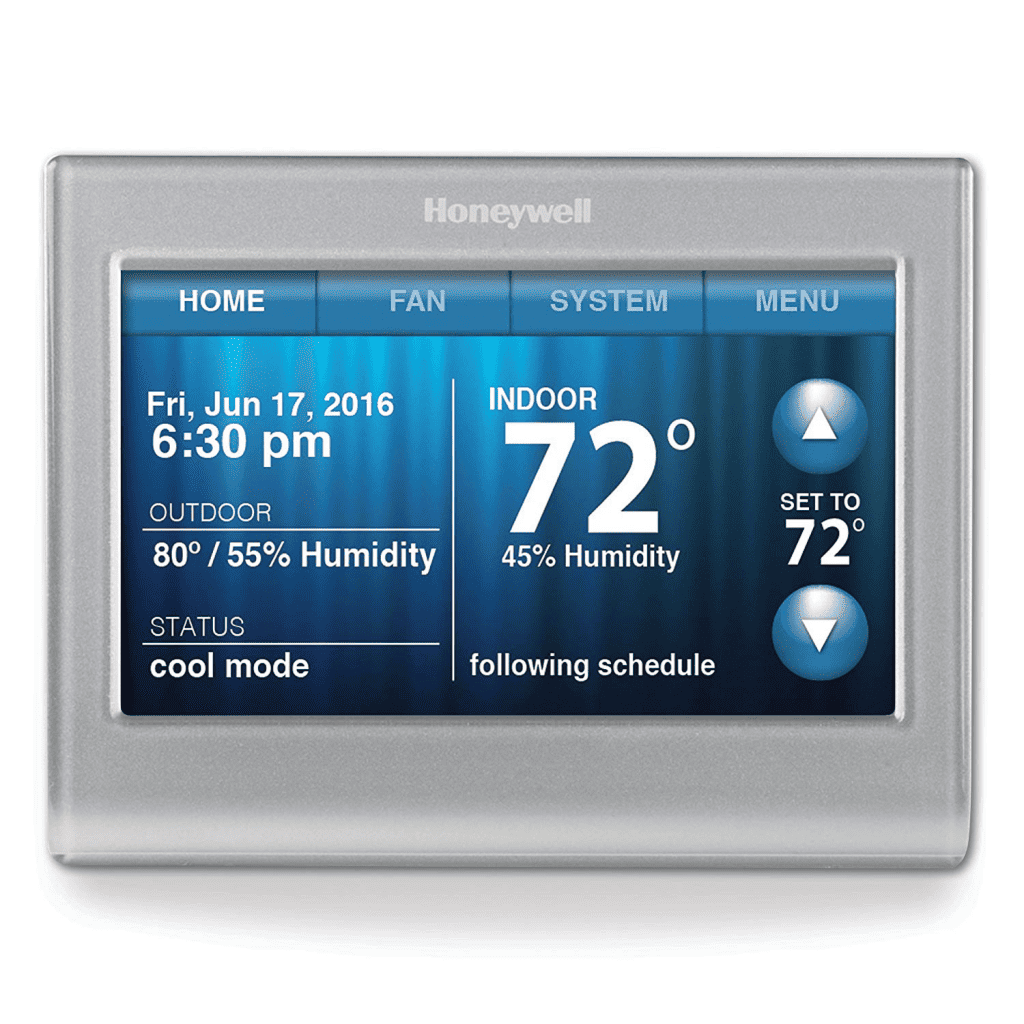When Nest hit the thermostat market in 2011 with its astounding wi-fi capability and smart features, it had only one competitor- Ecobee. However, with time, the HVAC industry mainstay, Honeywell, put forward the best designs and feature-rich products giving stiff competition to these two pioneers of smart thermostats.
So are all the smart thermostats equally built? The answer is no!
Some have simple wi-fi capabilities and offer basic scheduling and programming options like Honeywell RTH9585WF Thermostat Review (A Detailed Analysis)Honeywell’s RTH9580WF Wi-Fi Smart Thermostat. While some are feature-laden and have self-learning capabilities like the nest self-learning thermostat.
Some are compatible with single-stage systems while some work smoothly with multi-stage systems to control cooling.
In this article, you will get a descriptive comparison of the two big names in the thermostat world- Honeywell and Nest.
Nest Thermostat
Nest Learning Thermostat is a smart thermostat invented by Tony Fadell, Ben Filson, and Fred Bould for Nest Labs. Nest developed a new take on the thermostat for residential use. With Auto-Schedule, your Nest thermostat learns your preferred temperature settings at various times of the day.
Your thermostat will create a schedule for you after a few days of studying. While not the first, Nest’s Learning Thermostat accelerated consumer adoption by combining intuitive local controls, smartphone access, and automation. This enabled home cooling and heating to conserve energy rather than consume it.
Honeywell Thermostats
The Honeywell is a slim silver rectangle that resembles a pager and features a black 4.5-inch touchscreen that displays a substantial amount of info and interacts with a smartphone app. The Resideo app from Honeywell is a sophisticated one, capable of monitoring and controlling a variety of smart home devices.
It notifies you if there will be temperature extremes or if there is an unusual rise in energy consumption. Honeywell commercial communicating thermostats provide the fully integrated capability for various applications, ranging from zone management to rooftop units and practically everything in between.
Feature-wise Comparison of Nest and Honeywell
Both thermostats are designed to be wall-mounted to replace your existing thermostat. This implies they require a power connection, which is the primary impediment to installation. Let’s compare Nest and Honeywell across a variety of parameters.
Design
The Nest 3rd Generation smart thermostat is 3.3 x 3.3 x 1.21 inches in size and is available in six beautiful colors. It is stylish and will complement any interior design. Additionally, the digital display is brilliant with high quality and illuminates the current weather, temperature, or time.
Compared to the Google Nest thermostat, the Honeywell T9 is tinier, measuring just 2.6 x 2.6 x 0.77 inches. It, too, features a touchscreen display but is available exclusively in white.
When it comes to design and style Nest thermostat tops the chart for sure.
Basic Controls
The Honeywell device requires a little more effort to configure. First, you must connect it to your home Wi-Fi network using the password for the network. After that, you must register the thermostat at mytotalconnectcomfort.com.
The MAC ID and Device code of the thermostat must be added to the account. You will receive an email on your registered email id with complete guidance and steps to activate your device and grant remote access. An Apple or Android app can be downloaded to gain access while on the go.
After installing the Nest, it must be connected to your home Wi-Fi network using the network password. After that, you’ll need to download the Apple or Android app. After registering the thermostat, it can be managed remotely.
Compatibility
Both Google Nest and Honeywell’s smart thermostats work with virtually all HVAC systems. Additionally, the makers have included simple-to-follow installation videos to streamline the procedure. You can go through their videos to get your thermostat up and running with no hassle.
Ease of use
To use these thermostats, you’ll also need a smart smartphone, a Wi-Fi connection, and the accompanying software. You’ll need to follow certain instructions to train your thermostat on the new schedules.
Both thermostats include House and Away modes, which enable you to regulate and maintain your home’s temperature regardless of whether you’re at home or away.
Energy consumption
Both devices have Energy Saver certification. Depending on your area, several energy providers offer discounts on your energy bill for installing such a thermostat. On average, energy savings of 20% to 30% might be predicted.
Additionally, both devices include features that aim to lower the residents’ cost and amount of energy. Incorrectly designed thermostats can result in increased energy use. The temperature sensors’ accuracy ensures that the temperature you set is not several degrees hotter or colder than you desire.
Procedure for installation.
While the Nest model may operate without a ‘C’ wire by drawing power for the Wi-Fi from the surplus in the D and G wires, it has been known to drop the Wi-Fi occasionally when the excess power drawn is inadequate to access your HVAC system. A ‘C’ wire is advised to ensure a stable Wi-Fi connection.
If your present system lacks a ‘C’ wire, Honeywell suggests using an existing spare wire or connecting the ‘G’ wire to the ‘C’ terminal on both the thermostat and the system controller.
Conclusion
After reading the above comparison, you can choose the one that suits your needs and budget. Both offer decreased energy expenditures and a more adjustable heating system. You get notified of potential problems before they become a serious issue.
However, choosing between Nest and a Honeywell thermostat is difficult: the price difference is minimal, and the functions are comparable.
Honeywell offers a range of connected and nonconnected programmable thermostats. This gives you more options to choose from.
However, if you are clear that you want a smart, connected thermostat, you can go for either of two Nest models– Gen 2 and Gen 3.




Comments are closed.